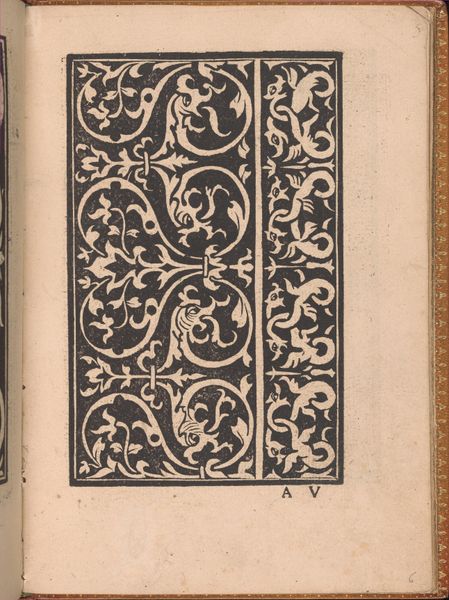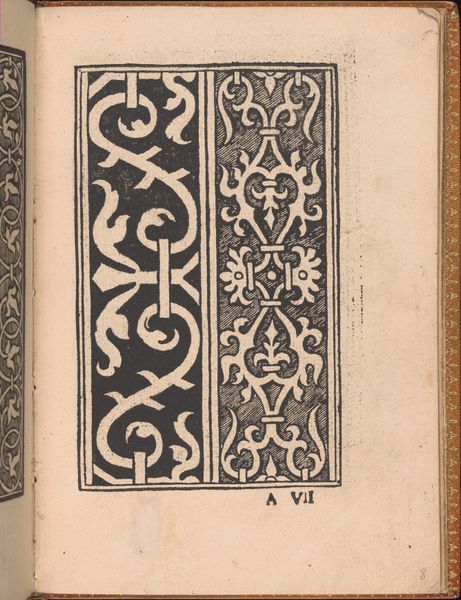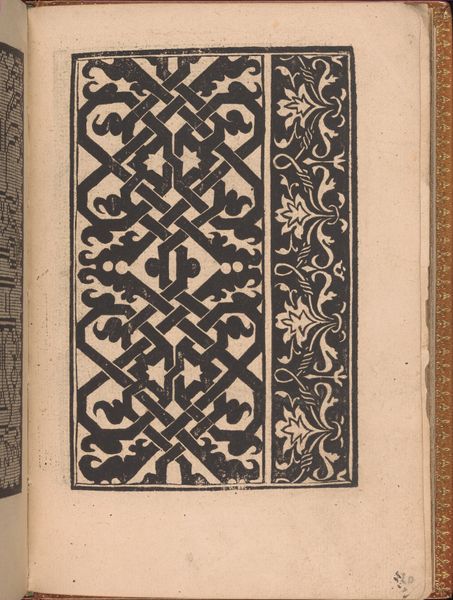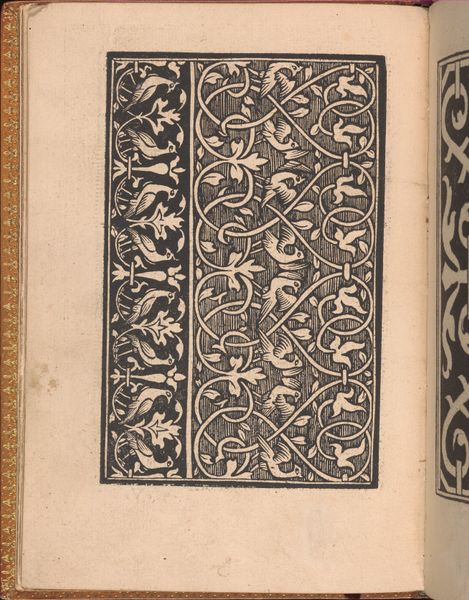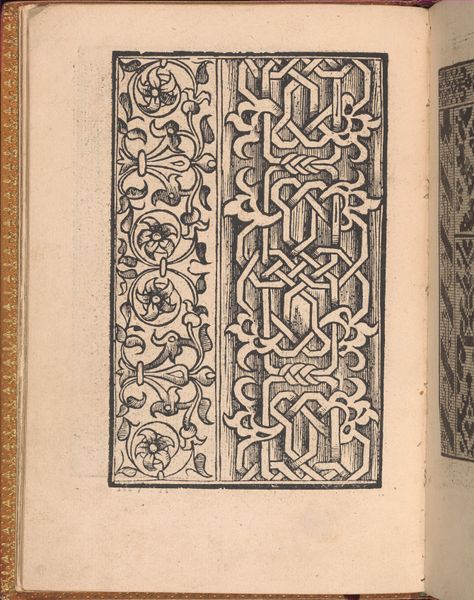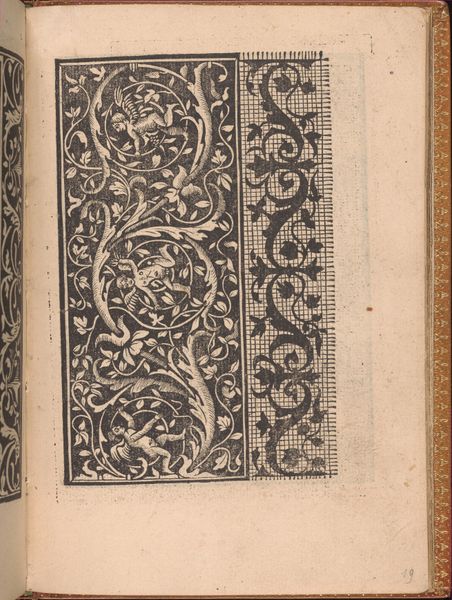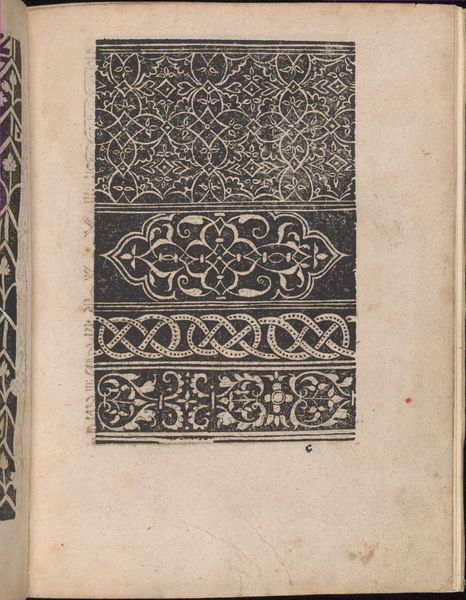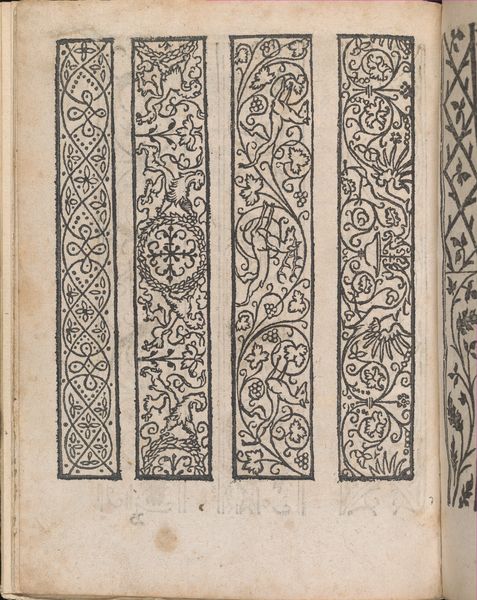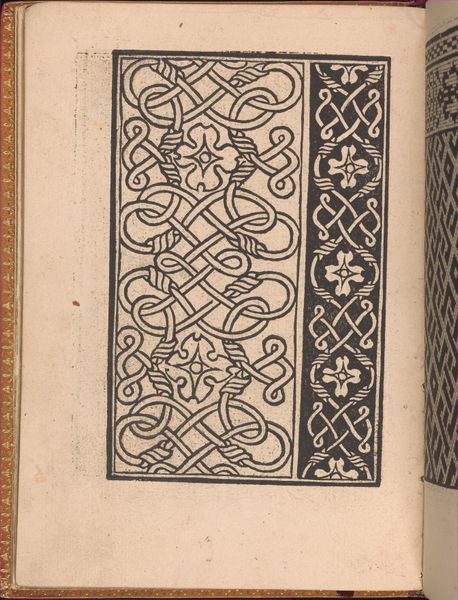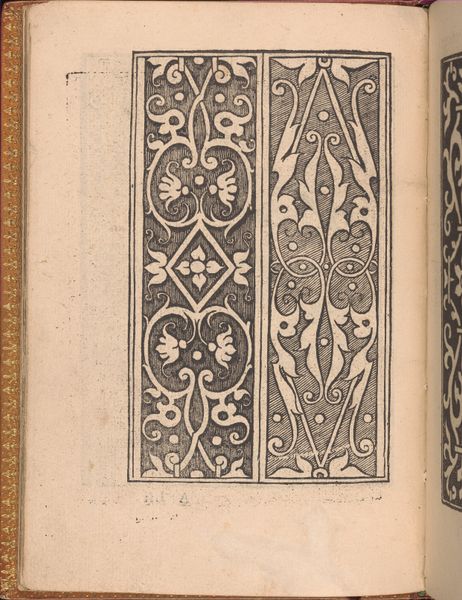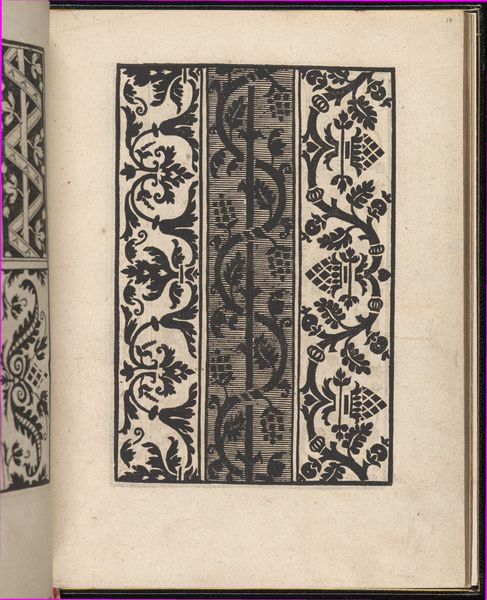
drawing, graphic-art, print, woodcut
#
drawing
#
graphic-art
# print
#
book
#
11_renaissance
#
linocut print
#
geometric
#
woodcut
#
italian-renaissance
Dimensions: Overall: 7 7/8 x 5 1/2 in. (20 x 14 cm)
Copyright: Public Domain
Curator: This woodcut, dating to 1532, is a page from "Convivio delle Belle Donne"– "Gathering of Beautiful Women" – produced in Venice by Nicolò Zoppino. The crisp, elegant designs were, as with other books of this time, meant to serve the reading public with both moral instruction, fashion advice, or games. Editor: My first reaction is one of fascination. It feels incredibly modern, almost like an Art Deco textile pattern. The sharp contrast of the black ink against the cream page gives it a bold presence. Curator: The motifs definitely connect with the artistic currents of the era, embracing ornamentation popular in Renaissance Italy. Geometric patterns and interweaving foliage fill the space. The work showcases a masterful control of the woodcut medium. Editor: I am curious about how this page reflects gender norms and female roles in the Renaissance. Did it challenge them, reinforce them? I am also interested in what ‘advice’ about beauty was promoted in this particular period in Italy and why. Curator: Good questions, because books like these were commodities but often tools to control, codify and prescribe beauty. The social history of such "advice" manuals reveals a cultural ambition: to guide female readers to embody certain values deemed appropriate by the Venetian patriarchal society. Editor: The presence of mythological figures such as the dragons adds another layer of complexity, symbolizing desire or strength. I think that it speaks volumes about female authorship. I can’t help thinking about the contemporary world and the ever-present emphasis on female appearances in culture and media, too. Curator: Absolutely, that ongoing conversation speaks to why historical perspectives are crucial. When we view artifacts, like these striking page decorations, through the lenses of gender, race, class, and social norms we expose larger histories and struggles. Editor: Looking closer, I wonder how many people ever engaged with the content. Was the advice heeded, and did women feel compelled or empowered by these visions of beauty? Curator: Precisely! It’s important to ask such questions, as they enable us to rethink preconceived notions of art and social practices, encouraging dialogue between present theories and historical frameworks. Editor: And this exploration enriches my understanding of what the artist aimed to create and its legacy as a mirror reflecting ourselves through the centuries.
Comments
No comments
Be the first to comment and join the conversation on the ultimate creative platform.
